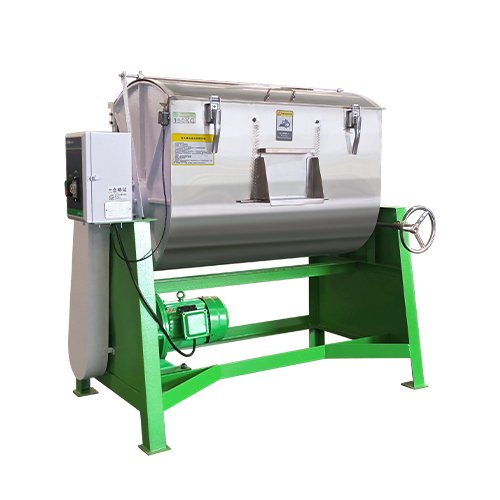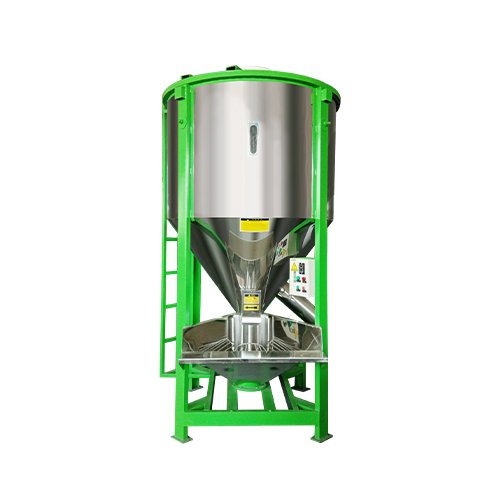Пластиковый миксер
Глобальный производитель пластиковых машин и завод
Поиск
Категория продукта
ПОЛУЧИТЬ КОРИ
Введение в смеситель весового типа Смеситель весового типа в основном применяется для точного смешивания
Введение в горизонтальный цветной смеситель Горизонтальный цветной смеситель является устройством, широко используемым в пластиковой
Введение в вертикальный цветной смеситель Вертикальный цветной смеситель является высокоэффективным смесительным оборудованием, предназначенным для
Введение в Вертикальный пластиковый смеситель Вертикальный пластиковый смеситель является основным оборудованием в пластиковой
Введение в горизонтальный пластиковый смеситель Горизонтальный пластиковый смеситель является видом оборудования, широко используемого
I. What is Plastic Mixer
In the plastic processing industry, a plastic mixer is an indispensable piece of equipment. It is mainly used to evenly mix various plastic raw materials according to specific proportions and requirements to ensure the quality and performance of the final product. Whether it is the production of plastic products, plastic particles, or plastic recycling, a plastic mixer plays a key role.
1. Definition and Function of Plastic Mixer
A plastic mixer is a piece of mechanical equipment specifically used for mixing plastic raw materials. It uses mechanical stirring to fully mix plastic particles of different types, colors, and particle sizes to achieve a uniform effect. This equipment can not only improve production efficiency but also ensure the stability of product quality. Plastic mixers are widely used in many fields, such as plastic product production, plastic particle processing, and plastic recycling.
2. Working Principle of Plastic Mixer
The working principle of a plastic mixer is mainly based on mechanical stirring. Its core component is the stirring blade, which is driven by a motor to rotate, causing the plastic particles to produce convection and shearing in the mixing barrel, thereby achieving mixing. Different types of plastic mixers can be divided into horizontal mixers, vertical mixers, and weighing mixers according to their structures and mixing methods. The mixing blades of horizontal mixers are usually spiral, which can make the materials mix evenly in the horizontal direction; while vertical mixers mix materials vertically, allowing the materials to be mixed under the combined action of gravity and stirring force.
II. Advantages of Plastic Mixer
Selecting an appropriate plastic mixer in the plastic processing industry can result in several advantages. The major advantages of plastic mixers are as follows:
1. Efficient Mixing
Plastic mixers can quickly and evenly mix various plastic raw materials, greatly improving production efficiency. A more uniform mixing effect and product quality can be guaranteed compared to traditional manual mixing or simple mechanical mixing. Weighing mixers can accurately add various raw materials according to the set ratio through a precise weighing system.
2. Precise Control
Modern plastic mixers come equipped with advanced control systems capable of enabling accurate control of the mixing process. Setting parameters such as mixing time, speed, and direction according to the varying process requirements can deliver the desired mixing effect. Some high-end machines can also realize automated operations, thus increasing production efficiency and product quality.
3. Energy Saving and Environmental Protection
The design and manufacture of plastic mixers take full consideration of the requirements for saving energy and protecting the environment. Their motors are high-efficiency and energy-saving, reducing energy consumption while ensuring good mixing. Some types of plastic mixers have dust recovery systems to decrease dust output during the running process, demonstrating environmental protection at the production level.
4. Easy to Maintain
Plastic mixers are designed to be easy to use and clean. Their main components, including the mixing blades and mixing barrels, are made of high-strength and corrosion-resistant materials, allowing them to run stably for a long time. Meanwhile, equipment maintenance costs are low, and only simple maintenance and inspection are required on a regular basis.
III. Application Scenarios of Plastic Mixer
Plastic mixers are widely used in the plastic processing industry, covering all links from raw material mixing to finished product production. The following are the main application scenarios of plastic mixers:
1. Plastic Product Production
Plastic mixers are used for mixing different plastic raw materials with additives in the production process of plastic products. Accurate mixing ensures that the color, performance, and quality of the product meet the requirements. Plastic mixers can carry out homogeneous mixing of the raw materials with additives to ensure the uniformity and consistency of the product.
2. Plastic Granule Production
Plastic mixers are used to mix recycled plastic waste with additives. Mixing enhances the properties of the waste, resulting in high-quality plastic granules. Recycled plastic waste can be mixed with additives like stabilizers and toughening agents by the plastic mixer to attain the same level of performance as virgin plastic granules.
3. Plastic Recycling
In plastic recycling, plastic mixers are used to mix various types of plastic waste. This mixing makes the properties of the waste more homogeneous, thus adding value to the recycling process. In addition to increasing efficiency in recycling, compatibilizers can be mixed with waste to improve compatibility.
IV. ВОПРОСЫ И ОТВЕТЫ
1. How to Choose a Suitable Plastic Mixer?
Choosing a suitable plastic mixer requires considering multiple factors, including production requirements, raw material characteristics, and budget. First, the type and capacity of the mixer should be determined according to production requirements. If the production scale is large, a large horizontal mixer can be selected; if the mixing ratio needs to be precisely controlled, a weighing mixer can be selected. Secondly, the characteristics of the raw materials, such as particle size, density, and fluidity, should be considered to select the appropriate mixing blades and mixing methods. Finally, cost-effective equipment should be selected according to the budget.
2. What Should Be Paid Attention to in the Maintenance of Plastic Mixer?
The following points should be paid attention to in the maintenance of a plastic mixer: First, regularly check whether the fasteners of the equipment are loose. If they are loose, they should be tightened in time. Secondly, the residual materials in the mixing barrel should be cleaned regularly to prevent the materials from agglomerating and affecting the mixing effect. In addition, the operating status of components such as motors and reducers should be checked regularly to promptly discover and eliminate potential faults. Finally, according to the requirements of the equipment manual, lubricating oil and other wearing parts should be replaced regularly to extend the service life of the equipment.
3. What is the Energy Consumption of Plastic Mixer?
The energy consumption of a plastic mixer mainly depends on the power and operating time of the equipment. Generally speaking, modern plastic mixers use energy-efficient motors that can reduce energy consumption while ensuring the mixing effect. Energy consumption can be further reduced by optimizing the mixing process and equipment operating time.




